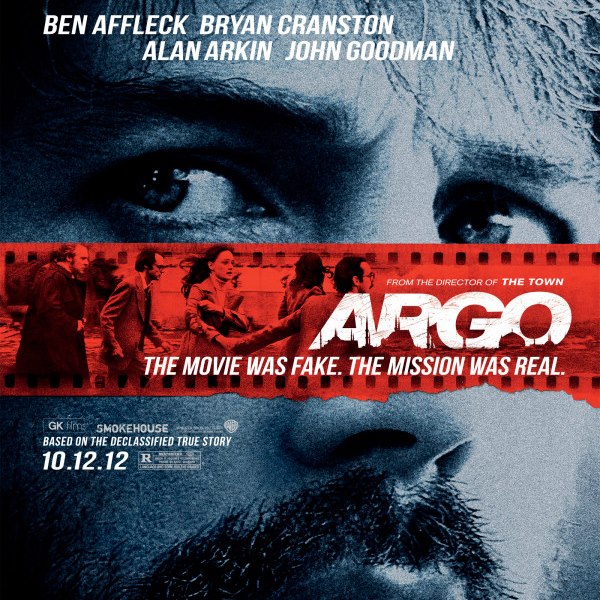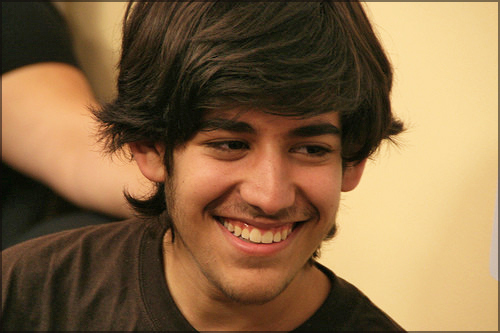I read a remarkable story today.
Pirated copies of the movie Argo are being viewed on TVs, laptops and at internet cafes across Iran, riveting almost everyone’s attention there on a shared history that has been difficult to recall with any clarity given the hardship of those intervening years.
What’s remarkable is that millions of Iranians seem to be using a Hollywood movie to come to terms with their past so they can stake a better claim to their future.
Presenting truths that can set you free always has its consequences. It will certainly provide a more reverential cast to Argo’s Oscar buzz this weekend. It may also prove to be far more worrisome to Iran’s current leadership than all the Israeli bombers, economic sanctions, and stuxnet computer viruses that can be hurled at them. However, Argo’s apparent truth serum in not just for countries that are intent on managing the hearts & minds of their citizens.
A deep dive into personal history can also bring with it the clarity of truth-telling when it helps us recall valuable information about ourselves that we can build upon today to make a better tomorrow. Argo’s impact on hearts & minds in Iran today provides a sense of the “kinds of truths” that are worth rediscovering, both collectively and personally.
Argo is a true story about a fake movie whose filming enabled several diplomats to escape from Tehran during the hostage crisis that engulfed the American Embassy in 1979. The film also captures some of the thuggish violence that characterized the early days of Iran’s revolution.
As depicted in Argo, today’s Iran didn’t arise the way state propaganda says it did. The land of ayatollahs and nuclear threats results, at least in part, from the fact that the thugs have been an essential ingredient in Iran’s revolution all along. The emergence of a new brand of religiously sanctioned violence is what Iranians are learning about in their past. Only it can explain the continued violence and hardship they are experiencing in their lives today—and what’s to be done about it.
The irony is that thuggish violence wasn’t the point of Argo. It merely provided a backdrop for the comically successful rescue of several endangered foreigners. On the other hand, perhaps it was the incidental portrayal of violence and zealotry—its matter-of-factness in a story that was really about something else—that has enabled Argo to strike a collective nerve among Iranians today. This is how.
Even more elemental than their current suffering is the fact that the Iranian people are, at their core, hospitable to strangers. From this perspective, the act of turning diplomatic guests into terrified hostages is now being recognized by many Iranians as the pivotal incident when things took a terrible turn for the worse in their country. A woman named Shohreh explains it this way:
Violence entered our [recent] politics with the takeover of the American Embassy. Our leaders figured they could interact with the world with aggression and eventually this trickled down to the way they deal with their own people.
The people of Iran will eventually build a future for themselves that is better than anything their leaders are providing today. Their future will be shaped by several factors, but perhaps none will be as important as reconnecting with their own basic hospitality.
In much the same way, we are hardwired to traits like “hospitality” or “curiosity” in our own personal histories. (For me, the sense of “gratitude” was particularly important.) Whenever we reach a fork in the road and need to make consequential life and work choices, reconnecting to our most basic impulses exerts a powerful influence. Of course, this is even more so when our experience over the intervening years has obscured what we were “most like” when we started out.
In his Shift: How to Reinvent Your Business, Your Career, and Your Personal Brand, branding master Peter Arnell uses a vivid image to describe how the past can propel the future vision we have for ourselves when we decide to make a change.
[C]reate a story line about yourself that you want to perpetuate. . . Wire it into your personal DNA. It should carry the energy and excitement of the ongoing change you want to make in your life. Like DNA, it needs to be coded in a way that is simple and strong and won’t unravel at the first hit of challenge or trouble.
You succeed by hardwiring your game plan for the future into basic information about you that’s been there all along. When done right, it has the simplicity and the strength of DNA.
As we tune into the Oscars this weekend and see the cheering section for Argo, it is worth stepping back to consider some of the remarkable ways that the past can influence the future when we make the effort to tell our best stories.





